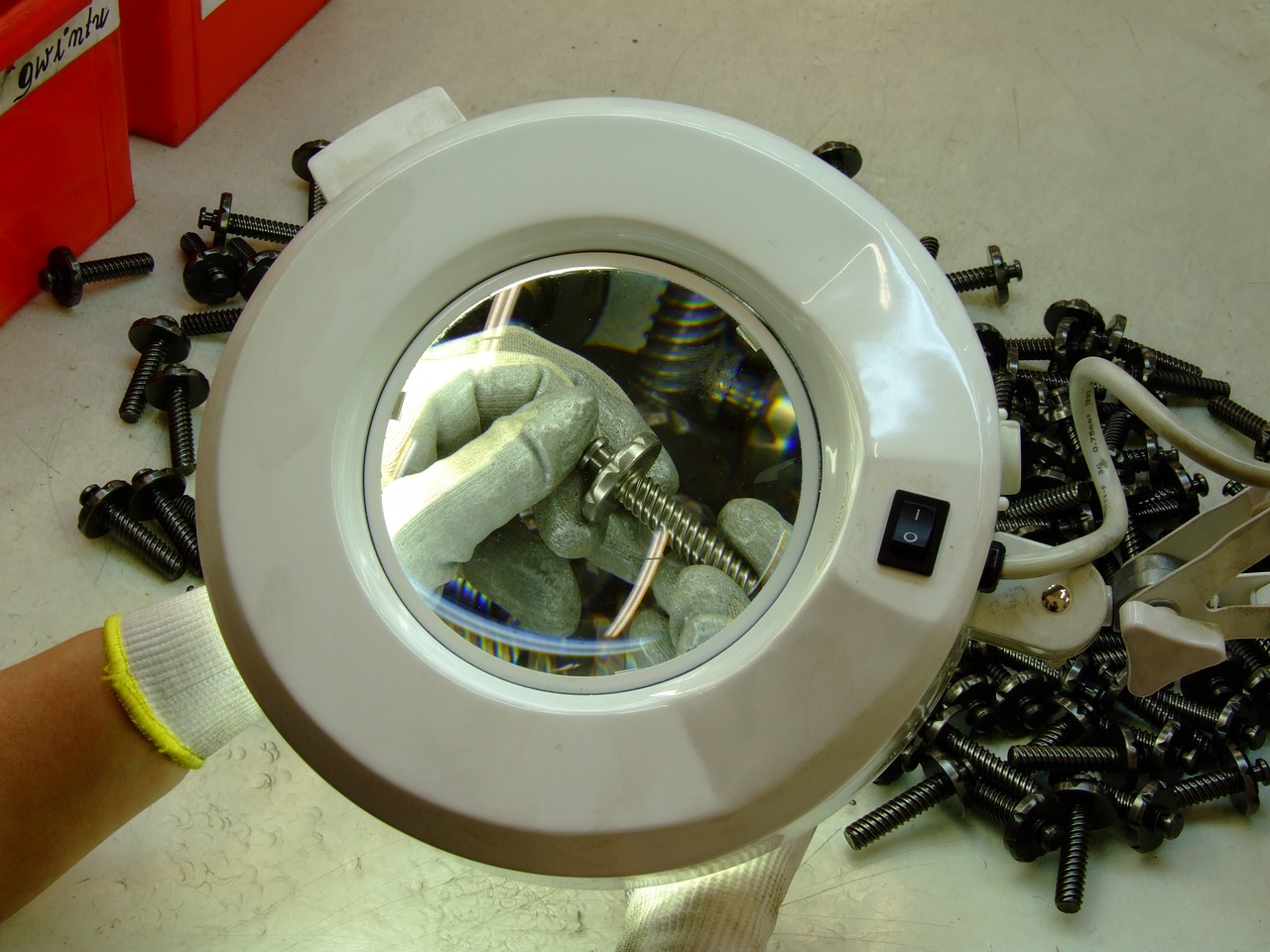Indoor Air Quality - Health and Safety Concerns
Indoor air quality (IAQ) is not just a technical term; it's a vital aspect of our everyday lives that can significantly impact our health and well-being. Imagine entering your home after a long day, only to be greeted by stale air that feels heavy and suffocating. It’s not just uncomfortable; it can lead to serious health issues. Poor indoor air quality can be likened to a silent predator, lurking in the shadows, ready to pounce on your health when you least expect it.
Many of us spend a significant portion of our lives indoors—whether at home, in the office, or other enclosed spaces. This makes the quality of the air we breathe crucial. The air inside our homes and workplaces can be more polluted than the air outside, primarily due to various indoor pollutants that accumulate over time. What’s even more alarming is that the effects of poor indoor air quality may not be immediately noticeable. You might think you’re perfectly healthy until one day you realize you’re experiencing unexplained headaches, fatigue, or respiratory issues. This is why understanding and improving indoor air quality should be a priority for everyone.
In this article, we will explore the critical aspects of indoor air quality, its impact on health, and the necessary measures to ensure a safe living environment. From identifying common indoor air pollutants to discussing practical strategies for improvement, we’ll cover it all. So, let’s dive in and uncover the hidden truths about the air we breathe indoors!
Indoor air quality (IAQ) refers to the condition of air within buildings, affecting the health and comfort of occupants. It encompasses various pollutants, humidity levels, and ventilation practices. Just like the food we consume, the air we breathe indoors deserves our attention. The quality of indoor air can be influenced by numerous factors, including the building's design, the materials used, and the activities that take place within. For instance, cooking, cleaning, and even the simple act of breathing can contribute to the overall air quality.
To grasp the importance of IAQ, consider this: on average, people spend about 90% of their time indoors. This statistic alone should make us sit up and take notice. Poor indoor air quality can lead to a range of health issues, from minor irritations to severe chronic conditions. It’s essential to be proactive in ensuring that our indoor environments are as safe and healthy as possible.
Various pollutants can compromise indoor air quality, including volatile organic compounds (VOCs), particulate matter, and biological contaminants. Understanding these pollutants is essential for maintaining a healthy environment. VOCs are emitted by numerous household items, from paints and solvents to cleaning products and air fresheners. These invisible culprits can cause a range of symptoms, from headaches to nausea, if not properly managed.
Identifying the sources of indoor pollutants, such as household products, building materials, and outdoor air infiltration, is crucial in mitigating their effects on health and safety. For example, did you know that the very furniture you sit on could be a source of indoor pollution? Many modern furnishings are treated with chemicals that can off-gas over time, contributing to poor air quality.
Many common household products, including cleaners and paints, release harmful chemicals into the air. Awareness of these products can help reduce exposure and improve indoor air quality. It’s like having a hidden enemy in your home—one that can be easily avoided by making informed choices about the products you use.
Certain building materials can emit harmful substances over time. Choosing low-emission materials during construction or renovation can significantly enhance indoor air quality. When planning a renovation, consider opting for eco-friendly materials that are less likely to compromise your health.
Biological contaminants, such as mold, bacteria, and allergens, can thrive in indoor spaces. Understanding their sources and effects is vital for maintaining a healthy living environment. For instance, mold can grow in damp areas like bathrooms and basements, and its spores can become airborne, leading to respiratory issues and allergic reactions.
Poor indoor air quality can lead to various health issues, ranging from respiratory problems to long-term chronic conditions. Recognizing these effects is essential for proactive health management. The connection between what we breathe and our health is undeniable. Just as a car needs clean fuel to run smoothly, our bodies require clean air to function optimally.
Short-term exposure to indoor air pollutants can cause headaches, dizziness, and irritation of the eyes, nose, and throat. Awareness of these symptoms can prompt timely action. If you find yourself sneezing or feeling lightheaded at home, it might be time to take a closer look at your indoor air quality.
Chronic exposure to poor indoor air quality can lead to serious health conditions, including asthma, cardiovascular diseases, and even cancer. Understanding these risks emphasizes the importance of improving IAQ. Think of it this way: ignoring indoor air quality is like ignoring a small leak in your roof. At first, it seems minor, but over time, it can lead to significant damage.
Implementing strategies to improve indoor air quality is essential for health and safety. This section discusses practical measures to enhance air quality in homes and workplaces. The good news is that there are many effective methods to tackle indoor air pollution and create a healthier living space.
Effective ventilation is crucial for reducing indoor air pollutants. Strategies such as natural ventilation and mechanical systems can help maintain a healthy air exchange rate. Opening windows and using exhaust fans can significantly improve air circulation, allowing fresh air to replace stale air.
Utilizing air purifiers and filtration systems can significantly reduce indoor pollutants. Understanding different types of air purification technologies is key to choosing the right solution for your space. Investing in a good air purifier can be like giving your home a breath of fresh air.
What are the most common indoor air pollutants? The most common indoor air pollutants include volatile organic compounds (VOCs), particulate matter, mold, and allergens.
How can I improve indoor air quality? You can improve indoor air quality by increasing ventilation, using air purifiers, and choosing low-emission products.
What are the symptoms of poor indoor air quality? Symptoms may include headaches, dizziness, fatigue, and respiratory issues.
Is indoor air quality testing necessary? Yes, testing can help identify specific pollutants and inform strategies for improvement.

Understanding Indoor Air Quality
This article explores the critical aspects of indoor air quality, its impact on health, and the necessary measures to ensure a safe living environment.
Indoor air quality (IAQ) refers to the condition of air within buildings, affecting the health and comfort of occupants. It encompasses various pollutants, humidity levels, and ventilation practices. When we think about our homes or workplaces, we often focus on decor, furniture, and technology, but how often do we stop to consider the air we breathe? Just like we need to monitor the quality of the food we consume, the air we inhale deserves equal attention. Poor indoor air quality can lead to a myriad of health issues, making it crucial to understand its components.
IAQ is influenced by several factors, including:
- Pollutants: These can be emitted from various sources, both indoors and outdoors.
- Humidity Levels: High or low humidity can affect how pollutants behave and how comfortable we feel.
- Ventilation Practices: Proper ventilation is essential for diluting and removing indoor air pollutants.
To put it simply, think of indoor air quality as the invisible guardian of your health. Just like a superhero, it works behind the scenes to protect you from harmful substances lurking in your environment. But when it falters, it can lead to serious consequences. For instance, if the air is laden with pollutants, it can trigger allergies or exacerbate respiratory conditions. On the other hand, proper ventilation can help ensure that fresh air circulates throughout a space, reducing the concentration of harmful particles.
Moreover, the concept of IAQ is not just limited to homes; it extends to offices, schools, and public buildings as well. In fact, studies have shown that poor indoor air quality can lead to decreased productivity and increased absenteeism in workplaces. Imagine trying to concentrate on a task while battling headaches and fatigue caused by stale air! It's a scenario no one wants to find themselves in.
To further illustrate the importance of IAQ, consider the following table that summarizes key factors affecting indoor air quality:
| Factor | Description |
|---|---|
| Pollutants | Substances that can cause health issues, such as dust, smoke, and chemicals. |
| Humidity | The amount of moisture in the air, which can affect comfort and pollutant behavior. |
| Ventilation | The process of exchanging indoor air with outdoor air to improve air quality. |
In conclusion, understanding indoor air quality is not just about recognizing the presence of pollutants; it's about creating a safe and healthy living environment. By being aware of the factors that influence IAQ, we can take proactive steps to improve it, ensuring that our spaces are not only comfortable but also conducive to our overall well-being.
Various pollutants can compromise indoor air quality, including volatile organic compounds (VOCs), particulate matter, and biological contaminants. Understanding these pollutants is essential for maintaining a healthy environment.
Identifying the sources of indoor pollutants, such as household products, building materials, and outdoor air infiltration, is crucial in mitigating their effects on health and safety.
Many common household products, including cleaners and paints, release harmful chemicals into the air. Awareness of these products can help reduce exposure and improve indoor air quality.
Certain building materials can emit harmful substances over time. Choosing low-emission materials during construction or renovation can significantly enhance indoor air quality.
Biological contaminants, such as mold, bacteria, and allergens, can thrive in indoor spaces. Understanding their sources and effects is vital for maintaining a healthy living environment.
Poor indoor air quality can lead to various health issues, ranging from respiratory problems to long-term chronic conditions. Recognizing these effects is essential for proactive health management.
Short-term exposure to indoor air pollutants can cause headaches, dizziness, and irritation of the eyes, nose, and throat. Awareness of these symptoms can prompt timely action.
Chronic exposure to poor indoor air quality can lead to serious health conditions, including asthma, cardiovascular diseases, and even cancer. Understanding these risks emphasizes the importance of improving IAQ.
Implementing strategies to improve indoor air quality is essential for health and safety. This section discusses practical measures to enhance air quality in homes and workplaces.
Effective ventilation is crucial for reducing indoor air pollutants. Strategies such as natural ventilation and mechanical systems can help maintain a healthy air exchange rate.
Utilizing air purifiers and filtration systems can significantly reduce indoor pollutants. Understanding different types of air purification technologies is key to choosing the right solution for your space.
Q1: What are the most common indoor air pollutants?
A: Common indoor air pollutants include volatile organic compounds (VOCs), particulate matter, mold, and allergens.
Q2: How can I improve indoor air quality in my home?
A: You can improve indoor air quality by ensuring proper ventilation, using air purifiers, and being mindful of the household products you use.
Q3: What are the health effects of poor indoor air quality?
A: Poor indoor air quality can cause short-term effects like headaches and irritation, as well as long-term issues such as asthma and cardiovascular diseases.

Common Indoor Air Pollutants
When we think about the air we breathe indoors, it’s easy to assume it’s clean and safe. However, **common indoor air pollutants** can significantly affect our health and well-being. These pollutants can come from various sources, and understanding them is the first step toward creating a healthier living environment. Some of the most prevalent indoor air pollutants include volatile organic compounds (VOCs), particulate matter, and biological contaminants.
Volatile organic compounds (VOCs) are a group of chemicals that easily evaporate at room temperature. They are often found in household products such as paints, varnishes, cleaning supplies, and even air fresheners. When these products are used, they can release harmful gases into the air, which can lead to a range of health issues. For instance, prolonged exposure to VOCs can cause headaches, dizziness, and even damage to the liver or kidneys. It’s crucial to choose low-VOC or VOC-free products whenever possible to minimize these risks.
Particulate matter consists of tiny particles or droplets in the air that can be inhaled into the lungs. These particles can originate from various sources, including cooking, smoking, burning candles, and even outdoor pollution that infiltrates indoor spaces. The size of these particles can vary, and smaller particles (like PM2.5) are particularly concerning because they can penetrate deep into the lungs and enter the bloodstream, leading to serious health problems such as respiratory diseases and cardiovascular issues.
Another significant category of indoor air pollutants is biological contaminants. These include mold, bacteria, viruses, and allergens like dust mites and pet dander. These pollutants can thrive in damp and poorly ventilated areas, making bathrooms and kitchens prime locations for mold growth. Exposure to biological contaminants can cause allergic reactions, asthma attacks, and other respiratory issues. It’s essential to maintain cleanliness and proper humidity levels in your home to combat these harmful agents.
To give you a clearer picture, here’s a summary of these common indoor air pollutants:
| Pollutant | Sources | Health Effects |
|---|---|---|
| Volatile Organic Compounds (VOCs) | Paints, cleaning products, air fresheners | Headaches, dizziness, liver damage |
| Particulate Matter | Cooking, smoking, outdoor pollution | Respiratory diseases, cardiovascular issues |
| Biological Contaminants | Mold, bacteria, dust mites | Allergic reactions, asthma attacks |
By recognizing these common indoor air pollutants and their sources, you can take proactive steps to improve your indoor air quality. It’s not just about comfort; it’s about safeguarding your health and the health of your loved ones. Remember, a little awareness goes a long way in creating a safe and healthy indoor environment.
Q: What are the signs of poor indoor air quality?
A: Common signs include frequent headaches, coughing, sneezing, and a general feeling of discomfort. If you notice these symptoms, it may be time to assess your indoor air quality.
Q: How can I reduce indoor air pollutants?
A: You can reduce indoor air pollutants by ensuring good ventilation, using air purifiers, choosing low-VOC products, and maintaining cleanliness to prevent mold and dust accumulation.
Q: Is indoor air quality more important than outdoor air quality?
A: Both are important, but indoor air can often be more polluted due to the accumulation of various pollutants. It’s essential to focus on both to ensure overall health.

Sources of Indoor Pollutants
Identifying the is crucial for anyone who wants to improve their indoor air quality and create a healthier living environment. Various everyday items and practices can contribute to the buildup of harmful substances in our homes and workplaces. It’s like trying to enjoy a picnic while ants are crawling all over your food; unless you know where they’re coming from, you can’t effectively get rid of them!
One of the primary sources of indoor pollutants is household products. Many of the cleaners, paints, and personal care items we use daily can release volatile organic compounds (VOCs) into the air. These chemicals are not only prevalent in cleaning supplies but also in air fresheners, adhesives, and even some types of furniture. For instance, did you know that a simple can of spray paint can emit harmful gases long after you’ve finished your DIY project? It’s essential to check labels and opt for low-VOC alternatives whenever possible.
Another significant contributor comes from the building materials used in our homes. Items like plywood, particleboard, and insulation can emit formaldehyde and other harmful substances over time. This is particularly true in new constructions or renovations where fresh materials are used. Choosing materials that are certified to have low emissions can make a world of difference. Think of it like choosing organic food; it may cost a bit more upfront, but the long-term health benefits are worth it.
Outdoor air can also infiltrate our indoor spaces, introducing pollutants from outside. This can include pollen, dust, and even vehicle emissions. When windows are left open, or if there are leaks in your home’s structure, you might be inviting unwanted guests into your sanctuary. Sealing cracks and ensuring proper insulation can help keep the bad air out, much like putting up a fence to keep out pesky intruders.
Lastly, let’s not forget the role of biological contaminants. Mold, bacteria, and allergens can thrive in damp, poorly ventilated areas, making them a significant concern for indoor air quality. These contaminants often find their way into our homes through moisture, which can come from various sources such as leaks, cooking, or even our breathing! Regular cleaning and maintenance, along with using dehumidifiers, can help keep these biological foes at bay.
In summary, being aware of the sources of indoor pollutants is the first step toward creating a healthier living environment. By making informed choices about the products we use, the materials we select, and the maintenance practices we adopt, we can significantly improve our indoor air quality. Remember, it’s all about creating a safe haven for ourselves and our loved ones!
- What are the most common indoor air pollutants? The most common indoor air pollutants include VOCs, particulate matter, mold, and allergens.
- How can I improve my indoor air quality? You can improve indoor air quality by ensuring proper ventilation, using air purifiers, and selecting low-emission products.
- What are the health effects of poor indoor air quality? Poor indoor air quality can lead to respiratory issues, headaches, and long-term health problems such as asthma and cardiovascular diseases.

Household Products
When it comes to maintaining a healthy indoor environment, we often overlook the impact of . Many of the items we use daily, from cleaners to personal care products, can release harmful chemicals into the air we breathe. It's astonishing to think that something as simple as a spray cleaner or a scented candle could be contributing to poor indoor air quality. In fact, these products can emit volatile organic compounds (VOCs), which are known to have detrimental health effects.
Understanding the types of household products that can compromise air quality is crucial. Common culprits include:
- Cleaning Supplies: Many all-purpose cleaners, disinfectants, and air fresheners contain VOCs that can irritate the respiratory system.
- Paints and Solvents: Even after drying, these materials can continue to release harmful chemicals into the air.
- Pesticides: While they may keep pests at bay, the chemicals in pesticides can linger in the air and on surfaces, posing health risks.
- Personal Care Products: Items like shampoos, deodorants, and lotions can also emit VOCs, contributing to indoor air pollution.
To minimize exposure to these harmful substances, consider opting for green cleaning products that are free from harsh chemicals. Many brands now offer eco-friendly alternatives that are just as effective but much safer for your indoor air quality. Additionally, always ensure that your living space is well-ventilated when using any household products, allowing fresh air to circulate and dilute any lingering pollutants.
It's also wise to read labels carefully. Look for products labeled as low-VOC or no-VOC. By making informed choices, you can significantly reduce the amount of harmful chemicals entering your home. Remember, a little awareness goes a long way in creating a healthier living environment for you and your loved ones.
In summary, while household products are essential for maintaining cleanliness and hygiene, they can also be a source of indoor air pollution. By being mindful of the products we use and opting for safer alternatives, we can take significant steps toward improving our indoor air quality and safeguarding our health.
- What are VOCs? Volatile Organic Compounds are chemicals that can easily evaporate at room temperature and may have harmful effects on health.
- How can I improve indoor air quality? Use low-VOC products, ensure proper ventilation, and consider using air purifiers.
- Are natural cleaning products effective? Yes, many natural cleaning products are effective and safer for your indoor air quality.
- How often should I ventilate my home? It's recommended to ventilate your home daily, especially when using household products that emit fumes.

Building Materials
When it comes to indoor air quality, the choice of building materials plays a pivotal role. Many materials that we commonly use in construction and renovation can emit harmful substances over time, contributing to a decline in indoor air quality. For instance, materials like particleboard and plywood often contain adhesives that release volatile organic compounds (VOCs), which can be detrimental to health. These VOCs can linger in the air for years, leading to long-term exposure risks.
Moreover, some paints and finishes also contain high levels of VOCs. When these products are used, they can release harmful gases into the air even after they have dried. This is why it's essential to choose low-emission or no-VOC paints and finishes whenever possible. Not only do they help improve indoor air quality, but they also create a safer environment for occupants, especially for children and those with respiratory conditions.
Another aspect to consider is the use of natural materials. Materials such as bamboo, hemp, and recycled steel are increasingly popular due to their lower environmental impact and reduced emissions. These materials can contribute to a healthier indoor environment while also being sustainable choices. When selecting materials, it's crucial to consider their lifecycle emissions and how they will affect your indoor air quality over time.
To further illustrate this point, here’s a table outlining common building materials and their associated emissions:
| Building Material | Type of Emission | Impact on Indoor Air Quality |
|---|---|---|
| Particleboard | Formaldehyde | Can cause respiratory issues and irritation |
| Paints (conventional) | VOCs | Can lead to headaches and long-term health risks |
| Natural Wood | Minimal | Generally safe, especially if untreated |
| Bamboo | Minimal | Eco-friendly and low-emission |
In conclusion, being mindful of the building materials you choose can significantly impact your indoor air quality and overall health. By opting for low-emission products and sustainable materials, you can create a safer, healthier living environment that not only benefits you but also the planet.
- What are VOCs and why are they harmful?
VOCs, or volatile organic compounds, are chemicals that can evaporate into the air and cause various health issues, including respiratory problems and headaches.
- How can I improve indoor air quality with building materials?
Choose low-emission or no-VOC materials, use natural options like bamboo, and ensure proper ventilation during and after construction.
- Are there specific brands known for low-emission materials?
Yes, many brands specialize in eco-friendly and low-emission products; it's beneficial to research and select those that meet your needs.

Biological Contaminants
This article explores the critical aspects of indoor air quality, its impact on health, and the necessary measures to ensure a safe living environment.
Indoor air quality (IAQ) refers to the condition of air within buildings, affecting the health and comfort of occupants. It encompasses various pollutants, humidity levels, and ventilation practices.
Various pollutants can compromise indoor air quality, including volatile organic compounds (VOCs), particulate matter, and biological contaminants. Understanding these pollutants is essential for maintaining a healthy environment.
Identifying the sources of indoor pollutants, such as household products, building materials, and outdoor air infiltration, is crucial in mitigating their effects on health and safety.
Many common household products, including cleaners and paints, release harmful chemicals into the air. Awareness of these products can help reduce exposure and improve indoor air quality.
Certain building materials can emit harmful substances over time. Choosing low-emission materials during construction or renovation can significantly enhance indoor air quality.
Biological contaminants, such as mold, bacteria, and allergens, can thrive in indoor spaces, often unnoticed until they become a significant issue. These microscopic invaders can dramatically affect your health and well-being. For instance, mold spores can be released into the air, leading to respiratory issues and allergic reactions. Bacteria can proliferate in damp areas, contributing to the spread of infections. Allergens, including dust mites and pet dander, can exacerbate conditions like asthma and hay fever.
One of the most insidious aspects of biological contaminants is their ability to reproduce quickly in favorable conditions. For example, mold can begin to grow within just 24 to 48 hours in humid environments, making it crucial to act swiftly if you suspect an outbreak. Here are some common sources of biological contaminants:
- Moisture: Leaks, spills, and high humidity can create an ideal breeding ground.
- Organic Materials: Wood, paper, and fabrics can harbor mold and dust mites.
- Pets: Fur and dander from pets contribute significantly to indoor allergens.
To combat biological contaminants, it’s essential to maintain a clean and dry environment. Regular cleaning and proper ventilation can help mitigate their presence. Additionally, using dehumidifiers in damp areas can significantly reduce mold growth, while air purifiers equipped with HEPA filters can trap and eliminate allergens from the air.
Poor indoor air quality can lead to various health issues, ranging from respiratory problems to long-term chronic conditions. Recognizing these effects is essential for proactive health management.
Short-term exposure to indoor air pollutants can cause headaches, dizziness, and irritation of the eyes, nose, and throat. Awareness of these symptoms can prompt timely action.
Chronic exposure to poor indoor air quality can lead to serious health conditions, including asthma, cardiovascular diseases, and even cancer. Understanding these risks emphasizes the importance of improving IAQ.
Implementing strategies to improve indoor air quality is essential for health and safety. This section discusses practical measures to enhance air quality in homes and workplaces.
Effective ventilation is crucial for reducing indoor air pollutants. Strategies such as natural ventilation and mechanical systems can help maintain a healthy air exchange rate.
Utilizing air purifiers and filtration systems can significantly reduce indoor pollutants. Understanding different types of air purification technologies is key to choosing the right solution for your space.
Q: What are biological contaminants?
A: Biological contaminants include mold, bacteria, and allergens that can negatively impact indoor air quality and health.
Q: How can I reduce biological contaminants in my home?
A: Regular cleaning, controlling humidity levels, and using air purifiers can help minimize biological contaminants.
Q: Why is indoor air quality important?
A: Good indoor air quality is essential for maintaining health, comfort, and overall well-being in living and working spaces.

Health Effects of Poor Indoor Air Quality
Poor indoor air quality (IAQ) can have significant implications for your health, affecting not just your comfort but also your overall well-being. When the air you breathe indoors is contaminated, it can lead to a range of health issues that may surprise you. From minor irritations to serious chronic conditions, the effects of poor IAQ are far-reaching and should not be overlooked. Imagine living in a space that feels safe and cozy, yet is secretly filled with invisible threats. It’s a bit like inviting a wolf into your home while believing it’s just a friendly dog.
Short-term exposure to indoor air pollutants can trigger an array of uncomfortable symptoms. You might notice headaches creeping in, or find yourself feeling dizzy for no apparent reason. Irritation of the eyes, nose, and throat can also occur, making you feel like you’ve just walked through a cloud of dust. These symptoms are your body’s way of signaling that something is amiss. It’s essential to be aware of these signs, as recognizing them can lead to prompt action that protects your health.
But the implications don’t stop there. Long-term exposure to poor indoor air quality can escalate into much more serious health conditions. Studies have shown that chronic exposure can lead to respiratory diseases, cardiovascular issues, and even certain types of cancer. It’s alarming to think that the very air we breathe in our homes could be a silent contributor to such severe health problems. Understanding these risks is crucial; it emphasizes the importance of taking proactive measures to improve IAQ.
To illustrate the potential health effects of poor indoor air quality, let’s take a look at a table summarizing some common pollutants and their associated health risks:
| Pollutant | Short-term Effects | Long-term Effects |
|---|---|---|
| Volatile Organic Compounds (VOCs) | Headaches, dizziness, eye irritation | Liver damage, kidney damage, cancer |
| Particulate Matter | Respiratory irritation, coughing | Asthma, heart disease, lung cancer |
| Mold and Biological Contaminants | Allergic reactions, sneezing | Chronic respiratory conditions, infections |
It’s clear that the air quality in our homes and workplaces is not just about comfort; it’s a matter of health and safety. By understanding the health effects associated with poor indoor air quality, we can take meaningful steps to mitigate these risks. Whether it’s improving ventilation, using air purifiers, or being mindful of the products we use, every effort counts in creating a healthier living environment.
Q: What are some signs that my indoor air quality is poor?
A: Common signs include persistent headaches, frequent allergies, unexplained fatigue, and visible mold growth.
Q: How can I improve indoor air quality?
A: You can improve IAQ by ensuring proper ventilation, using air purifiers, reducing the use of VOC-emitting products, and keeping your living space clean and dry.
Q: Are there specific pollutants I should be aware of?
A: Yes, watch out for VOCs, particulate matter, mold, and allergens like dust mites and pet dander.

Short-term Health Effects
When we talk about of poor indoor air quality, we are diving into a realm that often goes unnoticed until it hits us right in the face. Imagine coming home after a long day, only to find yourself sneezing, feeling dizzy, or experiencing a persistent headache. These symptoms, while seemingly minor, can be direct consequences of the air you breathe indoors. The truth is, the air inside our homes and workplaces can sometimes be more polluted than the air outside!
Short-term exposure to indoor air pollutants can lead to a variety of uncomfortable and distressing symptoms. These symptoms can vary based on the individual and the specific pollutants present, but common effects include:
- Headaches: Often triggered by chemical irritants like volatile organic compounds (VOCs) found in paints and cleaning products.
- Dizziness: This can occur due to a lack of proper ventilation or the presence of high levels of carbon dioxide.
- Irritation of the eyes, nose, and throat: Many pollutants can cause inflammation and discomfort in these sensitive areas.
- Fatigue: Poor air quality can sap your energy, making you feel unusually tired.
These symptoms are not just nuisances; they can significantly affect your daily life. For instance, if you find yourself frequently battling headaches or feeling fatigued, it can hinder your productivity and overall well-being. Moreover, recognizing these symptoms early can prompt you to take action, whether it's improving ventilation, using air purifiers, or simply being more mindful of the products you use in your home.
In more severe cases, exposure to certain pollutants can lead to acute respiratory issues, exacerbating conditions like asthma. While these short-term effects might seem manageable, they serve as a warning sign. Ignoring them could lead to a downward spiral of health problems, both in the short and long term. So, the next time you feel off after spending time indoors, consider the air quality around you—it might be time for a change!
Q: What are the most common indoor air pollutants?
A: Common indoor air pollutants include volatile organic compounds (VOCs), particulate matter, carbon monoxide, and biological contaminants like mold and dust mites.
Q: How can I improve indoor air quality quickly?
A: To quickly improve indoor air quality, increase ventilation by opening windows, use air purifiers, and reduce the use of chemical-based household products.
Q: Are there any specific symptoms that indicate poor indoor air quality?
A: Yes, symptoms like headaches, dizziness, eye irritation, and fatigue can indicate poor indoor air quality.
Q: How often should I check my indoor air quality?
A: It's good practice to regularly monitor your indoor air quality, especially if you notice any symptoms. Using air quality monitors can help you stay informed.

Long-term Health Effects
When it comes to indoor air quality (IAQ), the long-term health effects can be quite alarming. Imagine living in a space where the air you breathe is compromised day in and day out. Over time, this can lead to serious health issues that go beyond just the occasional cough or headache. Chronic exposure to poor indoor air quality can set the stage for a variety of health problems, including asthma, cardiovascular diseases, and even cancer.
One of the most concerning aspects is that many people are unaware of the hidden dangers lurking in their homes or workplaces. For instance, prolonged exposure to volatile organic compounds (VOCs) found in household products can lead to significant health risks. Studies have shown that individuals who spend a lot of time indoors, especially in poorly ventilated spaces, are at a higher risk of developing respiratory issues. This is particularly true for children and the elderly, who are more vulnerable to the effects of air pollution.
Moreover, the connection between indoor air quality and mental health is increasingly being recognized. Poor air quality has been linked to increased levels of anxiety and depression. When the air is filled with pollutants, it can disrupt not just our physical health but also our emotional well-being. The brain needs a steady supply of clean oxygen to function optimally, and any disruption can lead to cognitive decline over time.
To illustrate the severity of these long-term health effects, consider the following table:
| Health Issue | Description | Potential Causes |
|---|---|---|
| Asthma | A chronic condition that affects the airways, causing wheezing, shortness of breath, and coughing. | Indoor allergens, mold, and air pollutants. |
| Cardiovascular Diseases | Conditions that affect the heart and blood vessels, leading to heart attacks and strokes. | Long-term exposure to particulate matter and VOCs. |
| Cancer | Various types of cancer can develop due to exposure to carcinogenic substances. | Formaldehyde, radon, and other toxic chemicals found indoors. |
In conclusion, the long-term health effects of poor indoor air quality are not to be taken lightly. It's essential to recognize the significance of maintaining a healthy indoor environment. By being proactive and taking steps to improve air quality, we can safeguard our health and well-being for years to come.
- What are the signs of poor indoor air quality? Symptoms can include headaches, fatigue, and respiratory issues.
- How can I improve indoor air quality? Regular ventilation, using air purifiers, and minimizing the use of VOC-emitting products can help.
- Are plants effective in improving indoor air quality? Yes, certain plants can absorb toxins and improve air quality.

Improving Indoor Air Quality
Improving indoor air quality (IAQ) is not just a luxury; it’s a necessity for maintaining a healthy and safe living environment. Have you ever walked into a room and immediately felt discomfort? That could be a sign of poor air quality. Thankfully, there are practical and effective strategies you can implement to enhance the air you breathe at home or in the workplace. Let’s dive into some of these strategies that can make a real difference.
First and foremost, ventilation plays a crucial role in improving IAQ. Proper ventilation helps to dilute indoor air pollutants and bring in fresh outdoor air. There are two primary types of ventilation: natural ventilation and mechanical ventilation. Natural ventilation involves opening windows and doors to allow air flow, while mechanical ventilation utilizes systems like exhaust fans and HVAC units. Here’s a quick comparison of both methods:
| Type of Ventilation | Advantages | Disadvantages |
|---|---|---|
| Natural Ventilation |
|
|
| Mechanical Ventilation |
|
|
Another effective way to enhance indoor air quality is through air purification. Air purifiers equipped with HEPA filters can capture airborne particles, allergens, and even some volatile organic compounds (VOCs). It’s fascinating to think about how these devices can act like a shield, protecting you from unseen threats in your environment. When selecting an air purifier, consider the following:
- Room size: Ensure the purifier is suitable for the space you want to use it in.
- Filter type: HEPA filters are great for trapping small particles, while activated carbon filters can help with odors and gases.
- Noise levels: Some purifiers can be quite loud, so choose one that fits your comfort level.
In addition to these methods, it’s important to regularly maintain your living space. This includes cleaning and dusting surfaces to reduce dust accumulation, using non-toxic cleaning products, and ensuring that your HVAC system is serviced regularly. Think of your home as a living organism; just like you would take care of your health, nurturing your home environment is essential for a vibrant life.
Moreover, keeping humidity levels in check can also significantly improve indoor air quality. High humidity can lead to mold growth and dust mites, while low humidity can cause dry skin and respiratory issues. Ideally, aim for indoor humidity levels between 30% and 50%. Using dehumidifiers in damp areas and humidifiers in dry climates can help maintain these levels.
Finally, let’s not forget about the importance of plant life. Houseplants can naturally filter air pollutants and add a touch of nature to your indoor environment. Some plants, like spider plants and peace lilies, are known for their air-purifying qualities. Incorporating greenery into your space not only beautifies it but also enhances your overall well-being.
Q: How often should I replace air filters in my HVAC system?
A: It’s recommended to check your air filters every month and replace them every 3 months, or more often if you have pets or allergies.
Q: Can indoor air quality affect my sleep?
A: Absolutely! Poor air quality can lead to discomfort and disrupt sleep patterns. Ensuring clean air can help improve your overall sleep quality.
Q: Are there any specific plants that help improve indoor air quality?
A: Yes! Some popular air-purifying plants include snake plants, bamboo palms, and rubber plants. They not only enhance air quality but also add aesthetic value to your space.

Ventilation Strategies
This article explores the critical aspects of indoor air quality, its impact on health, and the necessary measures to ensure a safe living environment.
Indoor air quality (IAQ) refers to the condition of air within buildings, affecting the health and comfort of occupants. It encompasses various pollutants, humidity levels, and ventilation practices.
Various pollutants can compromise indoor air quality, including volatile organic compounds (VOCs), particulate matter, and biological contaminants. Understanding these pollutants is essential for maintaining a healthy environment.
Identifying the sources of indoor pollutants, such as household products, building materials, and outdoor air infiltration, is crucial in mitigating their effects on health and safety.
Many common household products, including cleaners and paints, release harmful chemicals into the air. Awareness of these products can help reduce exposure and improve indoor air quality.
Certain building materials can emit harmful substances over time. Choosing low-emission materials during construction or renovation can significantly enhance indoor air quality.
Biological contaminants, such as mold, bacteria, and allergens, can thrive in indoor spaces. Understanding their sources and effects is vital for maintaining a healthy living environment.
Poor indoor air quality can lead to various health issues, ranging from respiratory problems to long-term chronic conditions. Recognizing these effects is essential for proactive health management.
Short-term exposure to indoor air pollutants can cause headaches, dizziness, and irritation of the eyes, nose, and throat. Awareness of these symptoms can prompt timely action.
Chronic exposure to poor indoor air quality can lead to serious health conditions, including asthma, cardiovascular diseases, and even cancer. Understanding these risks emphasizes the importance of improving IAQ.
Implementing strategies to improve indoor air quality is essential for health and safety. This section discusses practical measures to enhance air quality in homes and workplaces.
Effective ventilation is crucial for reducing indoor air pollutants. Think of ventilation as the lungs of your home; it needs to breathe to keep the air fresh and healthy. One of the most straightforward methods to improve indoor air quality is by ensuring that there’s adequate air exchange. This can be achieved through a combination of natural and mechanical ventilation systems.
Natural ventilation involves the use of windows, doors, and vents to allow fresh outdoor air to circulate while pushing stale air out. It's cost-effective and energy-efficient, but it relies heavily on weather conditions and may not always be sufficient, especially in tightly sealed homes. On the other hand, mechanical ventilation systems, such as exhaust fans and whole-house ventilation systems, provide a more controlled approach. They can actively filter and circulate air, ensuring that pollutants are removed efficiently.
When considering ventilation strategies, here are some key points to keep in mind:
- Air Exchange Rate: Aim for a proper balance of fresh air intake and stale air exhaust.
- Humidity Control: Maintain humidity levels between 30% and 50% to prevent mold growth.
- Regular Maintenance: Ensure that ventilation systems are cleaned and serviced regularly to maximize their effectiveness.
In summary, a well-thought-out ventilation strategy is a cornerstone of maintaining good indoor air quality. Whether you choose natural methods or mechanical systems, the goal remains the same: to create a healthy living environment that supports your well-being.
Q1: How often should I ventilate my home?
A1: Ideally, you should ventilate your home daily, especially in high-traffic areas like kitchens and bathrooms. Opening windows for at least 15-30 minutes a day can significantly improve air quality.
Q2: What are the signs of poor indoor air quality?
A2: Common signs include persistent odors, increased allergy symptoms, visible mold growth, and an increase in respiratory issues among occupants.
Q3: Can houseplants improve indoor air quality?
A3: Yes, certain houseplants can help filter pollutants and increase oxygen levels, contributing positively to indoor air quality.
Q4: Are there specific air purifiers I should consider?
A4: Look for air purifiers with HEPA filters, as they are effective in trapping small particles and allergens. Additionally, consider units with activated carbon filters for odor removal.

Air Purification Solutions
This article explores the critical aspects of indoor air quality, its impact on health, and the necessary measures to ensure a safe living environment.
Indoor air quality (IAQ) refers to the condition of air within buildings, affecting the health and comfort of occupants. It encompasses various pollutants, humidity levels, and ventilation practices.
Various pollutants can compromise indoor air quality, including volatile organic compounds (VOCs), particulate matter, and biological contaminants. Understanding these pollutants is essential for maintaining a healthy environment.
Identifying the sources of indoor pollutants, such as household products, building materials, and outdoor air infiltration, is crucial in mitigating their effects on health and safety.
Many common household products, including cleaners and paints, release harmful chemicals into the air. Awareness of these products can help reduce exposure and improve indoor air quality.
Certain building materials can emit harmful substances over time. Choosing low-emission materials during construction or renovation can significantly enhance indoor air quality.
Biological contaminants, such as mold, bacteria, and allergens, can thrive in indoor spaces. Understanding their sources and effects is vital for maintaining a healthy living environment.
Poor indoor air quality can lead to various health issues, ranging from respiratory problems to long-term chronic conditions. Recognizing these effects is essential for proactive health management.
Short-term exposure to indoor air pollutants can cause headaches, dizziness, and irritation of the eyes, nose, and throat. Awareness of these symptoms can prompt timely action.
Chronic exposure to poor indoor air quality can lead to serious health conditions, including asthma, cardiovascular diseases, and even cancer. Understanding these risks emphasizes the importance of improving IAQ.
Implementing strategies to improve indoor air quality is essential for health and safety. This section discusses practical measures to enhance air quality in homes and workplaces.
Effective ventilation is crucial for reducing indoor air pollutants. Strategies such as natural ventilation and mechanical systems can help maintain a healthy air exchange rate.
When it comes to enhancing indoor air quality, play a pivotal role. Utilizing air purifiers and filtration systems can significantly reduce indoor pollutants, ensuring the air you breathe is clean and safe. But how do you choose the right one?
There are various types of air purification technologies available, each designed to tackle specific pollutants. For instance, HEPA filters are renowned for their ability to capture small particles, while activated carbon filters excel at absorbing odors and volatile organic compounds (VOCs).
Here’s a quick overview of some popular air purification technologies:
| Type of Purifier | Best For | Key Features |
|---|---|---|
| HEPA Filters | Allergens, Dust | Captures 99.97% of particles ≥0.3 microns |
| Activated Carbon Filters | Odors, VOCs | Absorbs harmful gases and smells |
| UV Light Purifiers | Bacteria, Viruses | Uses UV light to kill microorganisms |
| Ionic Purifiers | Smoke, Dust | Emits negative ions to attract particles |
When selecting an air purifier, consider the size of the space you want to purify. A unit that is too small for a large room may not be effective, while a larger unit in a small space could be overkill. Moreover, regular maintenance, such as changing filters, is essential to keep the purifier functioning optimally.
In addition to standalone purifiers, integrating air purification into your HVAC system can provide a comprehensive solution for improving indoor air quality throughout your home or office. This method ensures that every room benefits from cleaner air, creating a healthier environment for everyone.
- What are the main benefits of using air purifiers? Air purifiers help reduce allergens, eliminate odors, and improve overall indoor air quality.
- How often should I change the filters in my air purifier? It typically depends on the model and usage, but most filters should be changed every 3 to 6 months.
- Can air purifiers eliminate viruses? Certain air purifiers, especially those with UV light technology, can help reduce the presence of viruses in the air.
- Are air purifiers noisy? Many modern air purifiers operate quietly, especially on lower settings, making them suitable for bedrooms and quiet spaces.
Frequently Asked Questions
- What is indoor air quality (IAQ)?
Indoor air quality (IAQ) refers to the condition of the air inside buildings, which can significantly impact the health and comfort of those who occupy the space. It includes factors such as the presence of pollutants, humidity levels, and the effectiveness of ventilation systems.
- What are common indoor air pollutants?
Common indoor air pollutants include volatile organic compounds (VOCs), particulate matter, and biological contaminants like mold and allergens. These pollutants can originate from household products, building materials, and even outdoor air that infiltrates your home.
- How can I identify sources of indoor air pollution?
Identifying sources of indoor air pollution involves looking at everyday items in your home, such as cleaners, paints, and building materials. Additionally, consider outdoor factors like traffic or industrial emissions that may enter your living space.
- What health effects can result from poor indoor air quality?
Poor indoor air quality can lead to a range of health issues, including short-term effects like headaches and irritation of the eyes, nose, and throat. Long-term exposure can contribute to serious conditions such as asthma, cardiovascular diseases, and even cancer.
- What are some effective strategies for improving indoor air quality?
Improving indoor air quality can be achieved through various strategies, such as enhancing ventilation through natural or mechanical means, using air purifiers, and selecting low-emission building materials. Regular cleaning and maintenance can also help reduce pollutants.
- How does ventilation affect indoor air quality?
Ventilation plays a crucial role in maintaining good indoor air quality by ensuring a proper exchange of air, which helps to dilute and remove indoor pollutants. Effective ventilation strategies can significantly reduce the concentration of harmful substances in your home.
- What types of air purification technologies are available?
There are several types of air purification technologies, including HEPA filters, activated carbon filters, and UV light purifiers. Each type has its unique benefits, so understanding their functions can help you choose the right solution for your specific needs.



















